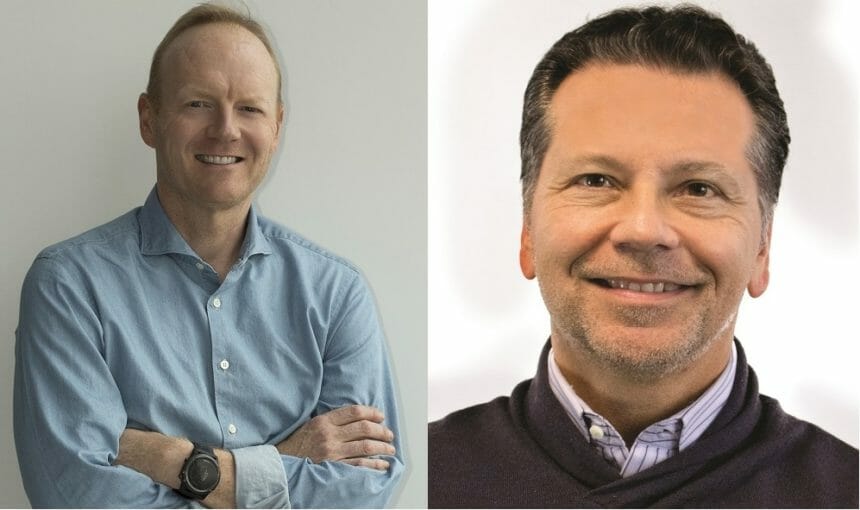My career path is paved by incredible experiences at agencies both large and small. The thing that’s kept me in love with the service side of healthcare marketing is the partnership we build with our clients. And it’s worth stating partnership is a word people should not take lightly.
From the agency perspective, partnership carries with it tremendous responsibility and accountability.
From the client side, partnership is built on a foundation of trust that is earned over time. As a result of cultivating the agency-client relationship at both large and small agencies, I can offer three key observations on small agency dynamics.
Success should be measured in how your knowledge has helped grow the clients’ brand and business rather than the number of people you have or the number of offices you own.
Being at a small to midsize independent agency doesn’t mean you can’t have a big impact. Fewer internal layers and greater operational agility allow small agencies to organize expertise and knowledge around a wide range of their clients’ needs.
Small agencies have to know their clients’ business to demonstrate value beyond their given assignment, many times extending their POV in areas that extend beyond your own service offerings.
They are just as accountable, not only to the client, but also to the brand and its performance.
Take satisfaction in depth over breadth of expertise, because trying to be everything to everyone often leads to poor results. While our “agency instincts” trigger a desire to pounce on every opportunity, small agencies can’t fake or muscle their way through assignments that don’t align with their expertise.
As a good partner, ideal client engagement is marked by honest communication, starting with a clear understanding of the problem(s) they are trying to solve and a realistic view on how you can provide the most value. Being authentic and honest about what you do well is the first step toward success.
Case studies stay with an agency, but experience travels with the individual. At the same time, don’t be afraid to stretch team members beyond their comfort zone and stereotype. Small agencies can, and often must, build teams that debunk a “swim lane” mentality. In turn, small agencies tend to attract a different type of person, someone who prefers to work on “this and that” over “this or that.”
I’ve found small agencies can actually be more dynamic because they can expand people and make better use of their internal talent.
It’s why I ask clients to put more value on people and the collective experience our agency team brings to their business over agency case studies.
Note: Parisi started working with Tenbarge 15 years ago when both worked at larger organizations. Here, they weigh in on keys to high-functioning partnerships between smaller entities.
Michael Parisi is CEO of Guidemark Health.
I’ve worked in healthcare marketing for 18 years, spanning four different companies. Two of those had tens of thousands of employees, global portfolios spanning numerous therapeutic areas, and the goal to take a drug from discovery through launch.
The other two had less than 1,000 employees and were focused on developing products in one therapeutic area and evolving into commercial companies.
I’ve had the benefit of working on small and large brands with varying degrees of marketplace challenges and opportunities. My most enjoyable experiences were when I was a part of a highly functioning brand-agency partnership.
There are two important “asks” of any agency I’m hoping to work with successfully.
Own the brand with us. The ideal agency partner is as plugged into the brand, market, and community as I am. I don’t want to update my agency teams on the latest events. I want them to update me.
When I worked for a large pharma company, we employed a model where we cycled people through various roles every one to two years. My agency partner at the time was small, focused in oncology, and its people tended to have more longevity in their roles. This manifested itself in our medical team calling the head copywriter when they had questions about our data.
Sell us what we need, not what you need. A typical big agency pitch starts with a map showing all the real estate it owns around the world.
Another familiar slide demonstrates the “constellation” of partner agencies that could support our business. At times it is hard to understand where the motivation to use these partners comes from. Is it a desire to grow the brand or expand the agency assignment?
When I began my career, the landscape was peppered by a handful of large pharma companies and big agencies. Now, on both the client and agency side, talented and experienced people are found in organizations of all shapes and sizes. The possibilities for innovation have never been greater.
Bryce Tenbarge is SVP, commercial at Progenics Pharmaceuticals.
From the October 01, 2018 Issue of MM+M - Medical Marketing and Media







